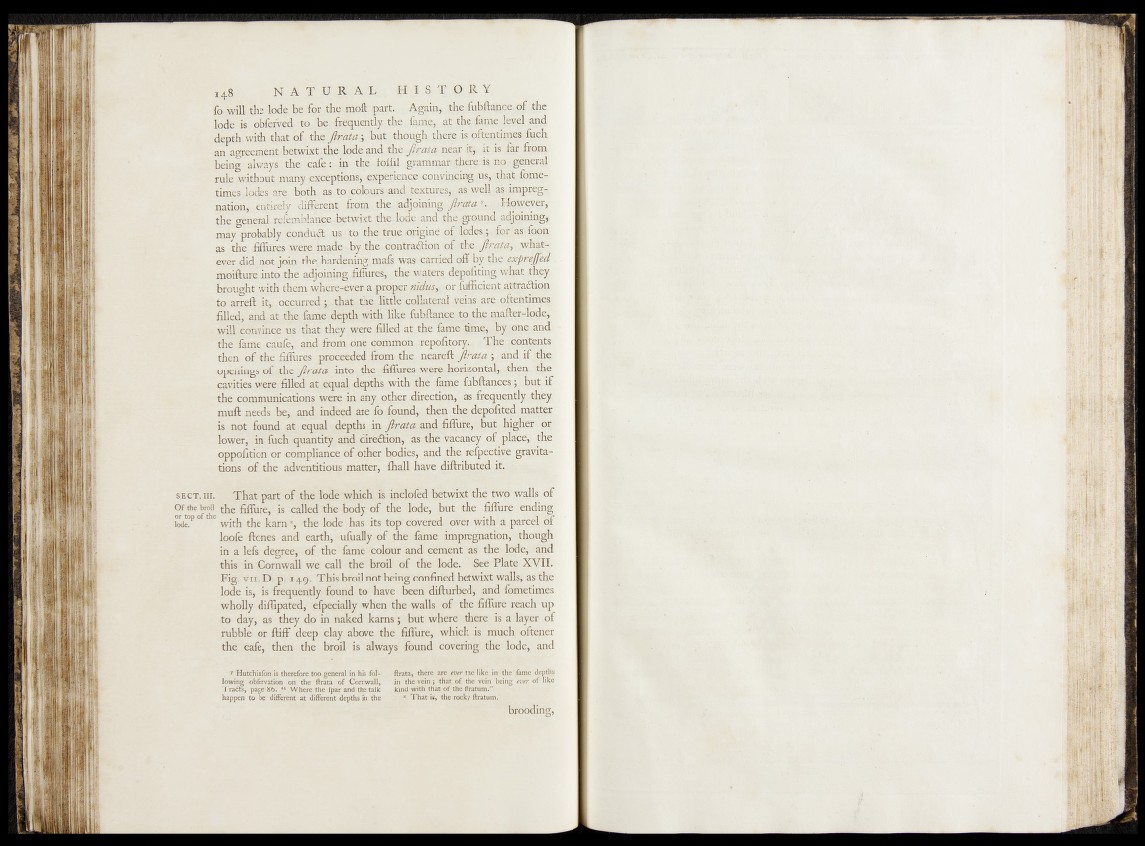
fo will the lode be fp^the-moft part. , ■ Agjiin,, the fubfta^ee, of ,the
lode is obferved to be-frequently-the, fame, at thefag|e, level and
depth with that of th e fir at a , but though there is oftentimes fuch
an agreement betwixt the lode and the fir at a near it, it is far from
being always the cafe: in the foffil grammar there is: no general
rule without many exceptions, experience convincing us, that fome-
times lodes are both as to colours and textures, as well as impregnation,
entirely different from the adjoining firata y. However,
the general refemblance betwixt the lode and the ground adjoining,
may probably conduit us to the true origine of lodes; for as foon
as the fiflhres were made by the contraction of the firata, | whatever
did not join the. hardening mafs was carried off by the exprejfed
moifture into the adjoining fiffures, the waters depofiting what they
brought withThem where-ever a proper nidus, or lufficient attraction
to arreft it, occurred; that the little collateral veins are oftentimes
filled, and at the fame depth with like fubftance to the mafter-lode,
will convince us that they were filled at the fame^time-,| by|one .and
thé feme caufë, and from one common reppfrtory.^ | The -cpngpts
then o f the fiflhres proceeded from the near^ft firata ; j$ndjf the
openings of the firata into the fiffures yvere horfrontalr ;then the
cavities were filled at equal depths with the lame fubftances; but n
the communications were in any other direction, as frequently (they
muff needs be, and indeed are fo found, then the depofited flatter
is not found at equal depths in firata andfiffure, but higher or
lower, in fiich quantity and direction, ay the, vacancy of, place, the
oppofition or compliance of other bodies, and the rcfpect%ye gravitations
of the adventitious matter, fhall have diftributed it. .
sect. in. That part of the lode which S inclofed betwixt tfid two' walls of
Ofthebroa tbe fiflfire, is called the body of the lode, but, the fiffpre ending
kd£P with the karn % the lode has its top covered over with 'a parcel df
loofe ftones and earth, ufually of the lame impregnation, though
in a lefs degree, of the fame colour and cement as the lode, and
this in Cornwall we call the broil of the lode. See Plate XVII.
Fig. v i i . D. p. 149. This broil not being confined betwixt walls, as the
lode is, is frequently found to have been difturbed, and fometimes
wholly diffipated, efpecially when the walls of the fiffure reach up
to day, as they do in naked kams; but where there is a layer of
rubble or ftiff deep clay above the fiffure, which is much oftener
the cafe, then the broil is always found covering the lode, and
y Hutch in fon is therefore too general in his following
obfervation on the ftrata of Cornwall,
Trails, page 86. ec Where the fpar and the talk
happen to be different at different depths in the
ftrata, there are ever the like in the fame depths
in the vein; that of the vein being ever of like
kind with that of the ftratum.”
* That is, the rocky ftratum.
brooding,